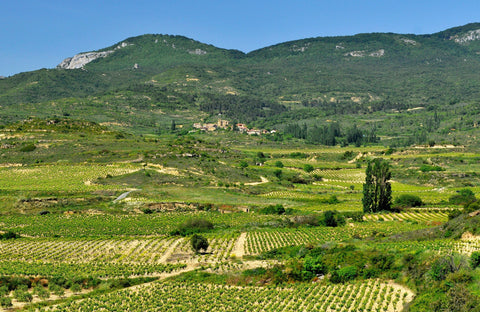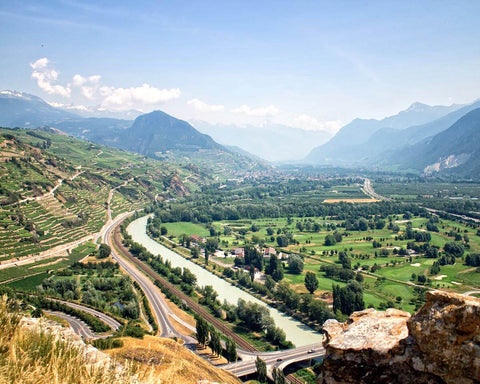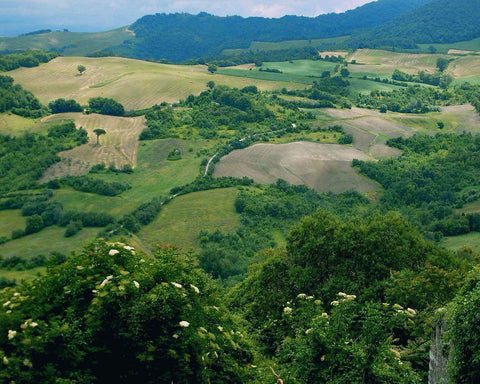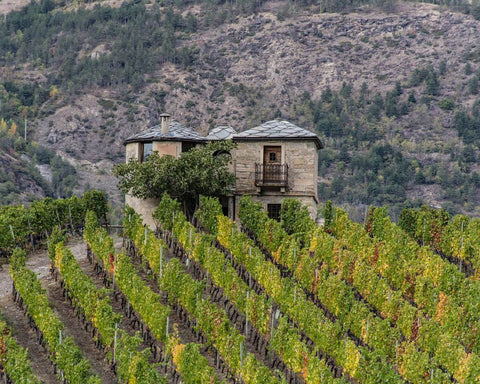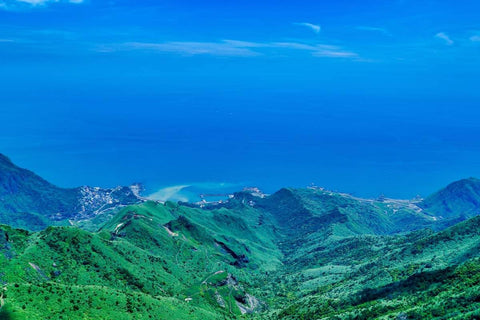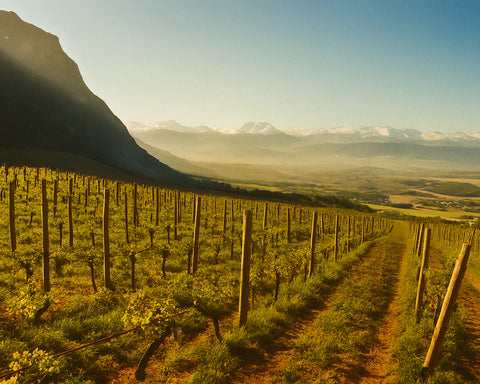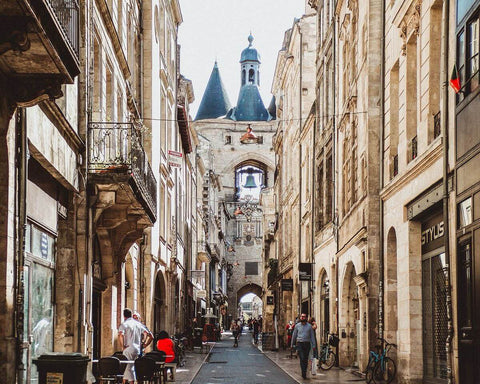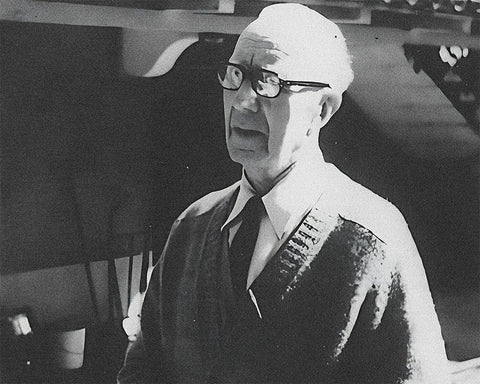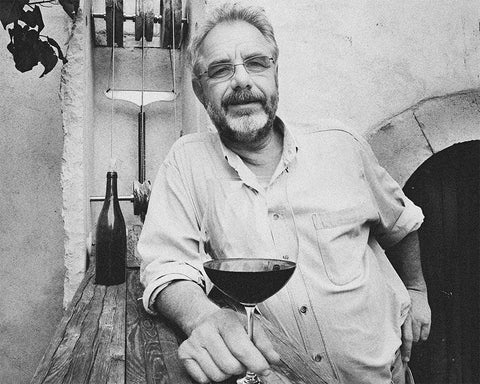Rioja, nestled in north-central Spain along the Ebro River valley, represents the pinnacle of Spanish wine tradition and the country's most internationally acclaimed wine region. Bordered by the Cantabrian Mountains to the north and the Sierra de la Demanda to the south, this historic region produces wines that epitomize Spanish winemaking excellence, from vibrant young tempranillos to complex Gran Reservas aged for decades. Rioja's unique combination of Atlantic and Mediterranean influences, diverse soils, and centuries-old winemaking wisdom creates wines celebrated for their elegance, complexity, and remarkable aging potential.
Over the centuries, Rioja has evolved from a medieval pilgrimage route into Spain's first modern wine region, pioneering quality classifications and aging requirements that set standards for the entire country. To wine lovers worldwide, Rioja represents the soul of Spanish wine—a perfect expression of terroir, tradition, and the art of patient winemaking.
Table of Contents
History of Rioja
Rioja's winemaking heritage stretches back over two millennia, with evidence of viticulture dating to Phoenician and Celtiberian times. This strategic valley along the Camino de Santiago has witnessed the rise and fall of empires, each leaving its mark on the region's wine culture and establishing traditions that continue to define Rioja's identity today.
The Romans brought systematic viticulture to Rioja, recognizing the valley's potential and establishing extensive vineyards along the fertile banks of the Ebro River. Archaeological discoveries, including ancient wine presses and storage facilities, demonstrate the sophistication of Roman winemaking in the region. The wines of Rioja were transported throughout the Empire, establishing trade routes that would prove vital for centuries to come.
During the medieval period, monasteries became the guardians of Rioja's wine tradition. The Monasteries of San Millán de la Cogolla and Santo Domingo de la Calzada, important stops on the Camino de Santiago, maintained vineyards and refined winemaking techniques. The first written reference to Rioja wine appears in the "Carta de población de Longares" from 1063, demonstrating the region's early recognition for quality wine production.
The 19th century marked Rioja's transformation into a modern wine region. When phylloxera devastated French vineyards in the 1860s, Bordeaux négociants turned to Rioja, bringing with them revolutionary techniques including barrel aging and estate bottling. Pioneering bodegas like Marqués de Riscal and Marqués de Murrieta, founded by Spanish aristocrats who had studied in Bordeaux, established the foundations of modern Rioja winemaking.
The 20th century saw Rioja become Spain's first wine region to establish a regulatory council (1926) and achieve Denominación de Origen status (1933). The region's classification system, formalized in 1970 and granted DOCa status in 1991, set the standard for Spanish wine quality. Today, Rioja continues to evolve, with traditional producers maintaining time-honored practices while innovative winemakers explore new expressions of this legendary terroir.
Terroir of Rioja
Rioja's terroir is defined by its unique position at the confluence of Atlantic and Mediterranean climates, creating ideal conditions for Tempranillo cultivation. The region stretches approximately 100 kilometers along the Ebro River valley, with elevations ranging from 300 to 800 meters, providing diverse microclimates and soil types that contribute to the complexity and elegance of Rioja wines.
The region's climate represents a delicate balance between Atlantic influences from the Bay of Biscay and Mediterranean warmth from the east. The Sierra de Cantabria mountains provide crucial protection from harsh Atlantic storms, while allowing sufficient moisture for vine cultivation. This climatic duality, combined with significant diurnal temperature variations, ensures slow, even ripening that preserves acidity while developing complex flavors and aromas.
The Geology of Rioja
Rioja's geological complexity results from millions of years of river erosion, tectonic activity, and sedimentary deposition, creating distinct soil types that define each subregion's character.
- Clay-Limestone (Rioja Alta): Rich clay soils with high limestone content provide excellent water retention and contribute to the elegance and aging potential of Rioja Alta wines.
- Clay-Ferrous (Rioja Alta): Iron-rich clay soils in lower elevations produce more robust, structured wines with deeper color and fuller body.
- Alluvial Soils (Rioja Oriental): Ancient river terraces with rounded pebbles over clay provide good drainage and heat reflection, ideal for Garnacha cultivation.
- Calcareous Clay (Rioja Alavesa): Shallow soils over limestone bedrock create low-yielding vineyards producing intensely concentrated, mineral-driven wines.
This geological diversity allows different areas of Rioja to specialize in specific styles, from the elegant, age-worthy wines of Rioja Alta to the more immediate, fruit-forward expressions of Rioja Oriental.
Climate and its Influence
Rioja's climate represents a unique convergence of influences, with Atlantic moisture meeting Mediterranean warmth to create ideal conditions for quality viticulture. The region's position, protected by mountain ranges yet open to climatic influences through river valleys, creates the perfect environment for growing Tempranillo and other traditional varieties.
The Grapes of Rioja
Rioja's grape varieties reflect centuries of selection and adaptation, with indigenous varieties perfectly suited to the region's unique climate and soils. While international varieties have been introduced, traditional grapes continue to define Rioja's character.
Red Grape Varietals
- Tempranillo: The king of Rioja, comprising 85% of plantings, expressing different characteristics across subregions and creating wines of remarkable complexity and longevity.
- Garnacha: Traditional blending partner to Tempranillo, adding body, alcohol, and sweet fruit character, particularly important in Rioja Oriental.
- Graciano: Low-yielding variety prized for its intense color, acidity, and aromatic complexity, essential for long-aging Gran Reservas.
- Mazuelo (Cariñena): Contributing structure, acidity, and tannins to blends, particularly valuable in warmer vintages.
White Grape Varietals
- Viura (Macabeo): The principal white variety, producing fresh, fruity wines when young and complex, oxidative styles when aged.
- Malvasía: Traditional variety adding aromatic complexity and richness to white blends.
- Garnacha Blanca: Increasingly important for modern white Riojas, providing body and texture.
- Tempranillo Blanco: Recently discovered mutation of Tempranillo, showing promising results for fresh, aromatic whites.
Top Wines of Rioja
Gran Reserva: The pinnacle of Rioja winemaking, these wines represent the region's commitment to extended aging. Produced only in exceptional vintages, Gran Reservas spend at least two years in oak and three years in bottle before release, developing extraordinary complexity, tertiary aromas of leather, tobacco, and dried fruits, and the ability to age gracefully for decades.
Reserva: The sweet spot of Rioja production, Reservas balance the fruit character of youth with the complexity of age. With at least one year in oak and two years additional aging, these wines showcase Rioja's signature style—elegant, balanced, and food-friendly, with notes of vanilla, coconut, and dill from American oak aging.
Crianza: The most accessible expression of traditional Rioja, Crianzas spend at least one year in oak barrels, developing gentle complexity while maintaining fresh fruit character. These wines represent exceptional value and demonstrate why Rioja remains one of the world's greatest wine bargains.
Modern Rioja: A new generation of winemakers creates "alta expresión" wines emphasizing terroir over aging classifications. Using French oak, shorter aging periods, and single-vineyard selections, these wines showcase Rioja's potential for powerful, concentrated expressions while maintaining regional typicity.
White Rioja: Once dominated by oxidative styles, modern white Riojas range from fresh, steel-fermented Viuras to barrel-fermented blends rivaling great white Burgundies. Traditional producers maintain the classic style of oak-aged whites with remarkable complexity and longevity.
Cuisine and Typical Products of Rioja
Riojan cuisine reflects the region's position as a crossroads of northern Spanish culinary traditions, combining the best of Basque, Navarrese, and Castilian influences. The cuisine emphasizes seasonal vegetables from the fertile Ebro valley, exceptional meats from mountain pastures, and a deep tradition of preserving and transforming local ingredients. This gastronomic heritage, recognized by the famous "Laurel Street" tapas culture in Logroño, perfectly complements the region's wines.
The foundation of Riojan cooking lies in its exceptional produce, particularly vegetables from the Ebro valley's market gardens. Peppers, artichokes, asparagus, and cardoons achieve remarkable quality, while the region's position on ancient transhumance routes ensures access to excellent lamb and beef. The influence of nearby regions adds sophistication, with Basque precision meeting Castilian heartiness.
Among Rioja's most celebrated dishes are those that showcase the harmony between local ingredients and wine, from simple preparations like patatas a la riojana to elaborate lamb dishes that pair perfectly with aged Reservas. The region's food culture emphasizes conviviality and tradition, with meals serving as celebrations of both sustenance and social connection.
Riojan Antipasti
Riojan meals often begin with selections that highlight the region's vegetables and charcuterie traditions:
- Pimientos del Piquillo Rellenos: Roasted piquillo peppers stuffed with cod or meat, showcasing Rioja's premium peppers.
- Champiñones a la Riojana: Mushrooms sautéed with garlic, parsley, and white wine—a classic tapa from Logroño.
- Chorizo al Vino: Local chorizo cooked in Rioja wine, embodying the marriage of food and wine.
- Verduras de Temporada: Seasonal vegetables like white asparagus or artichokes, simply prepared to highlight quality.
Riojan First Courses
First courses celebrate the Ebro valley's vegetable bounty and traditional preparations:
- Menestra de Verduras: Mixed vegetable stew featuring artichokes, peas, asparagus, and chard in rich sauce.
- Pochas con Codornices: Fresh white beans with quail, a seasonal delicacy combining garden and field.
- Sopa de Ajo Riojana: Garlic soup with paprika and poached eggs, perfect comfort food with wine.
- Patatas a la Riojana: Potato stew with chorizo and peppers, the region's most iconic dish.
Riojan Second Courses
Main courses showcase excellent meats and traditional cooking methods:
- Chuletillas al Sarmiento: Tiny lamb chops grilled over vine cuttings, the quintessential Riojan meat dish.
- Bacalao a la Riojana: Salt cod in rich tomato and pepper sauce, showing maritime influences.
- Cordero Asado: Roasted lamb from mountain pastures, often cooked in wood-fired ovens.
- Caparrones: Large red beans with chorizo, morcilla, and pork—hearty traditional fare.
Riojan Side Dishes
Side dishes emphasize the region's superb vegetables and simple preparations:
- Pimientos Asados: Roasted red peppers dressed with garlic and olive oil.
- Cardos con Almendras: Cardoons with almond sauce, a Christmas tradition.
- Alcachofas con Jamón: Artichokes sautéed with ham, highlighting two regional specialties.
Riojan Cheeses
While not as renowned for cheese as other Spanish regions, Rioja produces distinctive varieties:
- Queso Camerano: Fresh goat cheese from the Sierra de Cameros, mild and creamy.
- Queso de La Rioja: Semi-cured sheep's milk cheese with nutty, complex flavors.
- Queso en Aceite: Small cheeses preserved in olive oil with herbs, perfect with wine.
- Cuajada: Fresh curd cheese served with honey and walnuts as dessert.
Riojan Desserts
Traditional sweets often feature almonds, wine, and seasonal fruits:
- Fardelejos: Puff pastry parcels filled with almond paste, a regional specialty.
- Peras al Vino: Pears poached in spiced Rioja wine, marrying fruit and wine traditions.
- Torrijas Riojanas: Wine-soaked bread fried and sweetened, an Easter tradition.
- Mazapán de Soto: Almond marzipan from Soto en Cameros, among Spain's finest.
Typical Products of Rioja
Rioja's culinary identity rests on exceptional local products, many with protected status, that reflect the region's agricultural wealth and artisanal traditions.
Pimientos del Piquillo de Lodosa
These small, triangular red peppers from Lodosa possess extraordinary sweetness and complexity. Roasted over wood fires and hand-peeled, they represent the pinnacle of pepper cultivation and are essential to numerous Riojan dishes.
Chorizo Riojano
Rioja's distinctive chorizo, seasoned with local paprika and garlic, differs from other Spanish varieties in its balance and refinement. Both fresh and cured versions play essential roles in regional cuisine.
Aceite de La Rioja
Olive oil from ancient groves in Rioja Oriental produces distinctive oils with herbaceous notes and gentle bitterness, perfect for dressing vegetables and finishing dishes.
Patés de La Rioja
The region produces exceptional patés, particularly from game and pork, often incorporating local wine and showcasing French influence from historical connections.
More on Rioja's History
- Roman Foundations
- Medieval Wine Renaissance
- The Bordeaux Connection
- Modernization Era
- Contemporary Rioja
Roman Foundations
Roman colonization established Rioja's viticultural foundations, with extensive vineyard plantings along the Ebro valley and the development of wine storage and transportation infrastructure that would define the region's commercial importance for centuries.
Medieval Wine Renaissance
The Camino de Santiago brought prosperity and international exposure to Rioja, with monasteries perfecting winemaking techniques and establishing quality standards that elevated the region's reputation throughout medieval Europe.
The Bordeaux Connection
The phylloxera crisis created an unexpected opportunity when Bordeaux merchants sought Spanish wines, bringing revolutionary techniques including barrel aging and château-style winemaking that transformed Rioja into Spain's first modern wine region.
Modernization Era
The 20th century saw Rioja establish regulatory frameworks and quality standards that became models for Spanish wine regions, while maintaining traditional practices that preserved the region's unique character and aging philosophy.
Contemporary Rioja
Today's Rioja balances tradition and innovation, with established bodegas maintaining classical styles while new generation winemakers explore terroir expression and modern techniques, ensuring the region's continued relevance in the global wine market.
